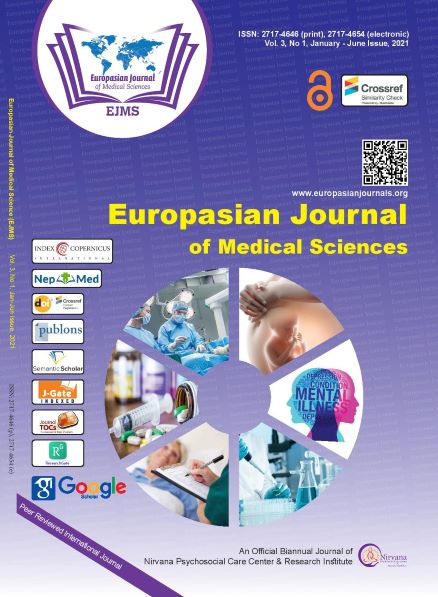Prevalence, Knowledge and Risk Factors for Postpartum Depression in Western Nepal - A Cross-Sectional Study
Abstract
Background: Postpartum depression(PPD)can be defined as nonpsychotic
depression occurring within a year after childbirth, characterized
by low mood, unusual thoughts, feeling of guilt, unexplained anxiety,
worthlessness, and other depressive symptoms. Objective: This study
aims to assess the prevalence, knowledge and risk factors of postpartum
disorder.
Methods: A cross-sectional descriptive study was conducted among
217 postpartum mothers in the outpatient department of psychiatry
of a tertiary care hospital using the Edinburgh postnatal depression
scale(EPDS). All the patients enrolled were directly interviewed using
a structured questionnaire to identify the associated risk factors of
postpartum depression. The data collected were checked for validity and
analyzed using S.P.S. version 16.0.
Results: Out of 217 patients, five women were found to have an
EPDS(Edinburgh postnatal depression scale) score greater than 10.
The prevalence of postpartum depression was found to be 2.3%.Upon
evaluation of knowledge about postpartum depression, 90.3% of women
were found to have a poor level of knowledge and 8.8% had a good
knowledge level. The statistically significant factors associated with
postpartum depression were the lack of support from family and partners
(p<0.005).
Conclusion: There was a comparatively low prevalence of P.P.D. in Western
Nepal. Majority of the mothers (90.3%) were found not aware of P.P.D.
The present study concluded on the need for educational intervention
among the mothers regarding P.P.D. in Western Nepal.
Copyright (c) 2021 Authors

This work is licensed under a Creative Commons Attribution 4.0 International License.
All articles published in EJMS are licensed under the Creative Commons Attribution 4.0 International License (CC-BY 4.0). The author/s as the copyright holder will retain the ownership of the copyrights without restrictions for their content under the CC-BY 4.0 license, and allow others to copy, use, print, share, modify, and distribute the content of the article even in commercial purpose as long as the original authors and the journal are properly cited. No permission is required from the author/s or the publishers. Appropriate attribution can be provided by simply citing the original article.
On behalf of all the authors, the corresponding author is responsible for completing and returning the agreement form to the editorial office. More information about the terms and conditions, privacy policies, and copyrights can be found on the webpage of the Creative Commons license privacy policy. https://creativecommons.org/licenses/by/4.0/




